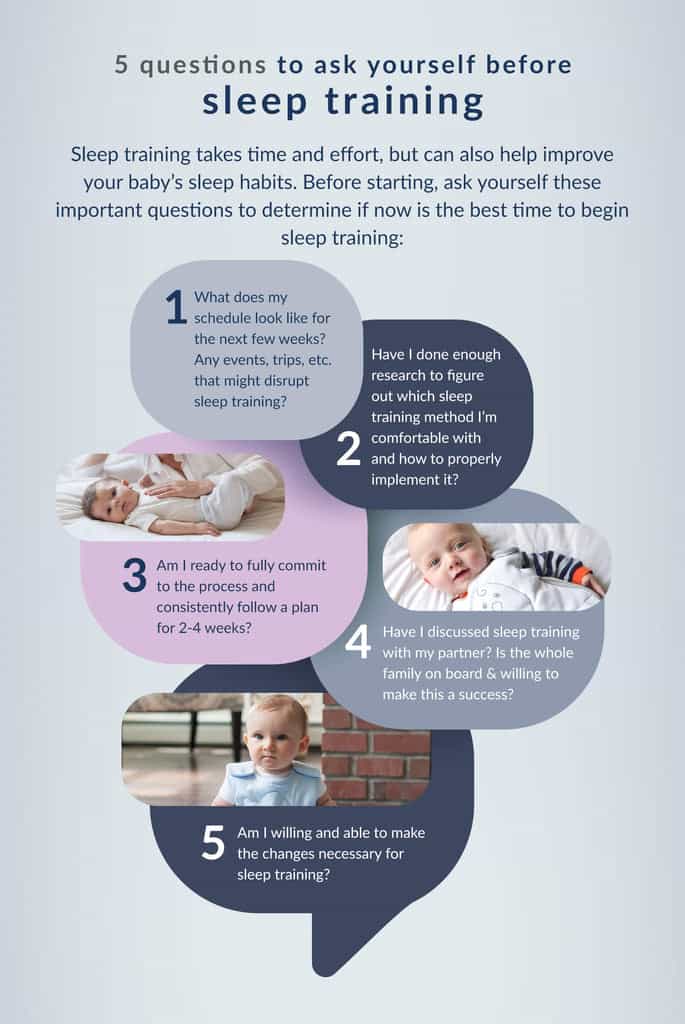How to Sleep Train Your Newborn: A Gentle Guide for Exhausted Parents
Hey there, amazing parents and guardians! Are you dreaming of catching those elusive Z’s that seem to have disappeared since your little bundle of joy arrived? Fear not! Our delightful guide to sleep training your newborn will help you and your baby embark on a journey to peaceful slumbers and blissful nights. ??
Welcome to the World of Baby Sleep Training!
First things first, let’s sprinkle a little bit of understanding on what sleep training really means. It’s all about helping your baby learn to fall asleep on their own and stay asleep for longer periods. It’s a magical bonding time, too, where you get to understand your baby’s sleep cues and needs. And guess what? It doesn’t have to be tear-filled or stressful for anyone! Let’s take this step by gentle step.
Understanding Newborn Sleep Patterns
Before you begin, it’s crucial to recognize that newborns have a different sleep cycle compared to us, grown-up wizards of wakefulness. They sleep in short bursts and need to feed often, even at night. Most babies don’t start developing a more predictable sleep pattern until they are about 3 to 4 months old. Patience is your trusty sidekick in the early weeks!
Setting the Stage for Successful Sleep Training
Environment can be everything for setting your munchkin up for a cozy night. Here’s how you can create a sleep-inducing environment:
- Magical Mood Lighting: Dim the lights as bedtime approaches. Soft lighting tells your baby’s brain that it’s time to wind down.
- The Lullaby of a Routine: Start simple bedtime rituals. A soothing bath, a gentle massage or a sweet song can signal that it’s sleepy time.
- The Nest of Dreams: Ensure your baby’s crib or bassinet is comfortable, safe, and inviting. A firm mattress and fitted sheet are all you need. Remember, no loose bedding or stuffed animals should crash the sleep party until your baby is older.
- What’s That Sound?: Consider using a white-noise machine. The hum reminds babies of their sound scape in the womb. Just keep it at a soft, peaceful volume.
The Gentle Sleep Training Approach
We’re talking about setting up a sleep strategy that’s filled with love, patience, and consistency. Here’s the lowdown:
- Reading Baby’s Sleepy Signals: Start noticing when your babe shows signs of sleepiness—yawning, rubbing eyes, or becoming fussy. This is the perfect time to start your sleep ritual.
- Time it Right: Initially, you’ll want to put your baby down to sleep when they’re drowsy but still awake. This magical moment is key for teaching them to fall asleep independently.
- Consistency is Your Friend: Stick to your chosen routine and methods so that your baby knows what to expect. This fairytale isn’t a night or two – it’s a chapter written over several weeks.
Alright, delightful dreamers, we’ve started our journey into the world of baby sleep training with some warm and cozy first steps. But there’s more to explore! Stay tuned, and remember — every baby’s sleep tale is unique, so adjust the story to fit your own little star’s needs. And before you know it, your beloved newbie will be snoozing more soundly, and you’ll be reclaiming those nights of well-deserved rest. Keep your eye on the prize: sweet dreams for your tiny treasure and a sprinkle of nighttime freedom for you! ??
Ready for the next chapter? Keep reading to learn about the different sleep training methods and how to handle the common hurdles that might pop up along the way. With a sprinkle of patience and a dash of dedication, you’re well on your way to becoming a sleep training superstar!
Gentle, loving, and ever so patient, you’ve got this! The road to dreamland awaits, so let’s keep going, intrepid sleep trainers!

5 Essential Things Parents Should Know Before Sleep Training
Embarking on the sleep training voyage can feel a bit daunting, but arming yourself with knowledge is like having a trusty compass. Here are five nuggets of wisdom to help guide you through the starlit skies of slumber:
- Know Thy Baby: Every baby is a unique universe of habits and preferences. Pay attention to your baby’s individual signs of tiredness and create a routine tailored to their rhythms, not someone else’s blueprint.
- Health Comes First: Before starting any sleep training program, ensure your little one is in good health. Check in with your pediatrician to clear any underlying conditions that might affect sleep.
- Routine is Golden: Like the steady ticking of a clock, a predictable routine can be incredibly reassuring for your baby. A calm and consistent bedtime routine can set the tone for an easier sleep training voyage.
- Parental Unity: If you’re co-piloting this journey with a partner, make sure you both have your maps aligned. Consistency in approach is crucial, so discuss and agree on strategies for nighttime awakenings and daytime naps.
- Patience, Patience, Patience: This can’t be overstated—patience is the fuel that will keep your ship sailing on nights when the waters get choppy. Some babies take to sleep training quickly; others need a bit more navigation. Breathe, be patient, and stay the course.
Choosing the Right Sleep Training Method
Just like there are many ships in the sea, there are various sleep training methods out there. Some parents swear by the “Cry-It-Out” approach for its quick results, while others prefer more gradual methods like “Ferber” (check-and-console) or “No Tears” strategies which focus on slowly building sleep independence. Research each method, consider your baby’s temperament and your own comfort level, then choose the one that feels like the best fit for your family.
Dealing with Common Sleep Training Challenges
Here we address some of the squalls you might face on your sleep training journey:
- Regression: There will be times when your baby suddenly starts waking up again after previously settling into a good pattern. This is normal. Teething, growth spurts, or illness can cause temporary regressions. Maintain the course with your established routine.
- Night Wakings: It’s natural for babies to wake up during the night, but not all wake-ups are hunger-driven. Sometimes all they need is a gentle pat or a soft shush to drift back to dreamland.
- Nap Time Nuances: Don’t forget daytime naps! They are just as crucial in your baby’s sleep training. Ensure your baby isn’t overtired by the time nighttime rolls around by establishing solid nap routines as well.
Starting the sleep training adventure can feel like setting sail on the high seas. But with this guide filled with love, patience, and consistency, you’ll find your way. Every little wave you crest brings you closer to that haven of restful nights and joyful mornings.
Stay buoyant, dear parents. For each small step you take towards helping your baby learn to self-soothe and sleep through the night is a giant leap towards reclaiming those long-lost Z’s. The slumber party is just beginning, and you’re the guest of honor. Sweet dreams are on the horizon, and soon, your little one will be the captain of their own sleep ship sailing smoothly through the night. ??
Embark on this journey with optimism and the certainty that your love and care will guide your little one to a lifetime of serene sea of slumbers. And remember, as they grow and as they rest, so will you. Sweet dreams await, so set your course and sail into the tranquil nights ahead.
Remember to keep your spirits high and your heart open. The path to restful nights isn’t always a straight line; it’s a winding road filled with learning, adjusting, and growing together. So, here’s sending you heaps of encouragement as you discover the rhythms and routines that will work best for your family.
See more great Things to Do with Kids in New Zealand here. For more information see here
Disclaimer
The articles available via our website provide general information only and we strongly urge readers to exercise caution and conduct their own thorough research and fact-checking. The information presented should not be taken as absolute truth, and, to the maximum extent permitted by law, we will not be held liable for any inaccuracies or errors in the content. It is essential for individuals to independently verify and validate the information before making any decisions or taking any actions based on the articles.




